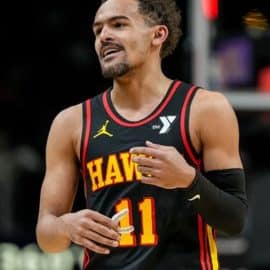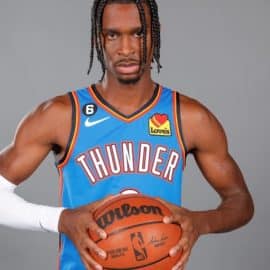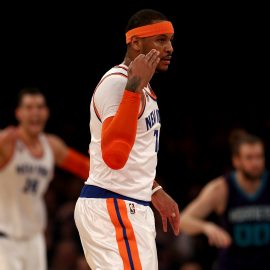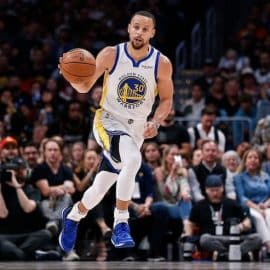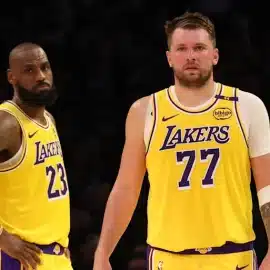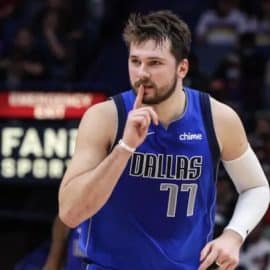In the leadup to the 2014 draft, there were two facts about Andrew Wiggins that were well known: he needed to sharpen his scoring skills and he had elite defensive tools. Yet for the two brief years we’ve had thus far of the Air Canada era, we’ve seen largely the opposite.
It turns out, scoring isn’t much of a problem for Wiggins. He started out his rookie year in fits and spurts, occasionally tossing a 20 (or 29) point game, but on December 23rd (this author’s birthday, readers!), against the team that had drafted him and traded him away, he came alive. In his 27th game as a pro, he went for 27 points. From that night until the end of the season, there were only two games in which he didn’t score in double digits.
And yet, the defense didn’t seem to come so easily. Despite having all the athleticism in the world, he has yet to find a way to lock in for prolonged stretches of play.
When we’re thinking about Wiggins’ defensive ability, most Wolves fans would probably point to matchups with James Harden from his rookie year as indicative of his lockdown potential, and that’s a good place to start. Wiggins is at his most comfortable defending in isolation, which is what he was able to do for the most part against Harden, the league’s foremost iso baller.
Even though Harden has 25 pounds on Wiggins, Wiggins has three inches and a longer wingspan, as well as fast-twitch jumping ability Harden can only dream of. Wiggins does a great job using that length and athleticism to bother every shot and jab-step Harden can throw at him.
That said, in the last two seasons, Harden has averaged 30.3 points and 9.1 assists against our Wolves so it’s not like he was exactly locked down. Wiggins seems to have the most trouble defending when screens are involved. He has a bad habit of dying on even relatively soft picks, and when he goes under, he goes too far under, relying on his recovery speed to get back to his man. Sometimes that works and sometimes it doesn’t.
http://www.youtube.com/watch?v=XwqCVfrGR4E
Wiggins also likes to allows his man to beat him in order to try to come from behind or sideswipe a shot attempt. That’s a risky play, as it looks more like a foul to the refs and puts more pressure on the bigs behind him, though he is able to pull it off just enough to not get in trouble for it. Even more problematic, if he doesn’t get his hand on the ball, his close-out doesn’t really affect the shot at all.
Now watch this video of two-time DPOY Kawhi “The Klaw” Leonard:
Kawhi is a textbook defender. In one-on-one situations, he keeps his hands above his knees, often between his waist and his chest, low enough that it bothers ball-handlers but high enough that he doesn’t have to move far to contest a shot. He fights to turn the corner on screens, coming off it almost as tight as the ball-handler he’s chasing. Most importantly, he doesn’t gamble himself out of position, either for steals or blocks.
But if there’s one attribute of Leonard’s that I hope Wiggins can appropriate, it’s the way Kawhi mirrors his opponent when they have the ball. The lasting image of the 2014 Finals for me is Kawhi shadowing every jab and feint LeBron had to offer, using LeBron’s own moves against him and keeping his hands in perfect position to go for the strip, while not leaving himself vulnerable to swing-through moves meant to draw cheap fouls.
It was the first and only time in LeBron’s 11-year career that he’d ever looked shook. It also led to this gem:
http://www.youtube.com/watch?v=7bFx-urmQDY
So am I expecting Wiggins to suddenly morph into the best wing defender in a generation, the first non-center to win DPOY since Ron Artest (when he was still named Ron Artest)? Of course not. But it’s not like he doesn’t have the raw physical attributes to reach that level.
This is his first year with a bona fide defensive savant teaching him (other than KG), and it’ll be a crucial year for fixing some of the bad habits that went untended in his first two seasons. If there’s a coach that can get him to that point, it’s Tom Thibodeau. The only thing that can get in the way of Wiggins’ potential, at this point, is Wiggins himself.
Add The Sports Daily to your Google News Feed!

